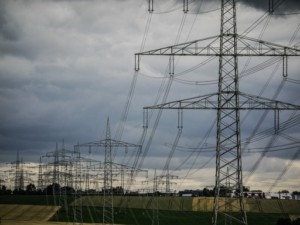Guest Author: Andreas Chai, Griffith University
contact: a.chai@griffith.edu.au
How has technological progress impacted income inequality? The usual answer is that technological progress fosters greater income inequality via changes on the supply side. Technological progress will drive up inequality because of robots stealing jobs, accelerating the rise of the service economy, stimulating global migration. One may be sorely tempted to conclude that rising income inequality is an inevitable outcome of ongoing technological progress.
Yet technological progress also has a lesser known and more positive impact on household living standards. In developing countries, the diffusion and adoption of new technologies has without doubt lowered the cost of everyday household tasks, such as cooking food, gathering firewood, and household chores, particularly in the rural areas of developing countries.
A famous case is the impact of mobile phones in Africa, which had a large impact on everything from banking, getting goods to market, and improving the efficiency of local markets. The problem here is that these effects are much harder to observe due to a lack of data on the characteristics of goods consumed and how they impact everyday life.
Moreover, in terms of how to accurately gauge household welfare levels, a better measure of household living standards beyond income is how much households consume. This approach recognizes that households may have other sources of wealth not captured by income and that income is only as valuable as the amount of goods and services that can be purchased with it. Here a study by Roger Fouquet and Peter Pearson underlines how technological progress has driven immense improvements in the quality of goods consumed over time, thereby effectively raising the purchasing power of households.
In a recent paper, headed by Maneka Jayasinghe (Griffith University), we examined how the adoption of technologies can have direct implications for measuring poverty via the equivalence scales used in calculating the income distribution (draft version available here). When measuring income inequality, equivalence scales are used to effectively deflate the observed income/welfare levels of larger households by making assumptions about the per capita costs of having more people living in the same household. These equivalence scales effectively make assumptions about the degree to which households achieve economies of scale in the sense that large households face lower per capita living costs than smaller households.
An easy way to examine the impact of technology on household economies of scale is via the consumption of electricity. The use of new technologies such as mobile phones, white goods and entertainment goods generally involve consuming more electricity. Moreover, there has been a tremendous growth in the number of households who have access to electricity in the developing world. In Sri Lanka, for example, access to electricity has risen from 29% to 85% between 1990 and 2010. By enabling households to use a wider range of goods, this will have an important impact on the living standards and the distribution of poverty.
Using electricity consumption as a proxy for the extent to which households adopt technologies, we found that households that used more electricity realized greater economies of scale. The more electricity a household consumed, the lower their per capita living costs (proxied by per capita expenditure on food). The estimates suggest a 10% increase in electricity consumption generated a 6.92% decline in these living costs. Though relatively small, when equivalence scales are adjusted to take this effect into account, the overall number of households falling below the poverty line declined by over 60% nationally in Sri Lanka.
Here it is interesting to note that the changes in income inequality were uneven. For starters, small households benefit less from economies of scale in consumption than large households. So large households tend to make greater gains in welfare relative to small households. Moreover, households in urban areas, where electricity access is better, tended to be among those who made the greatest gains in estimated welfare. Finally, estimated income inequality grew when considering the differences between these households and their rural counterparts who have less access to electricity.
In terms of policy implications, these results highlight the need for poverty alleviation programs to enhance household access to technologies and electricity. In addition, more research is needed to understand precisely which electrified goods contribute to economies of scale and the extent to which income inequality & poverty estimates in other regions exhibit the same pattern.
In the long run, a deeper issue that scholars and policymakers need to face is whether the widespread use of ‘base neutral’ equivalence scales is sensible. This involves the assumption that the economies of scale realized by households is independent of their income. It seems intuitive that differences in household income will generate differences in the extent to which households are both able to and willing to economize on per capita costs. Think of the range of goods and services rich households can afford to buy relative to low-income households. The interesting thing here is whether rich households actually do realize greater economies of scale even if they have the greater potential to do so.
Moreover, given that technologies change over time, this suggests that economies of scale realized by households will also evolve over time and thus so too should the equivalence scales used in estimating income inequality. This is particularly important when considering changes in income inequality over long periods of time, which has become a very hot topic. Considering that the characteristics of goods and services used by households has altered dramatically, long run comparisons of income inequality should be treated with great care.
On a more general level, it is a small part of a recent explosion of research on how equivalence scales can be devised using different techniques, including life satisfaction data, as well as intra household bargaining approaches. All of these add to more detailed and realistic understanding of household welfare and ultimately better inform us about the geographic and social distribution of poverty.

